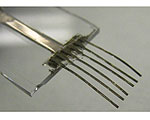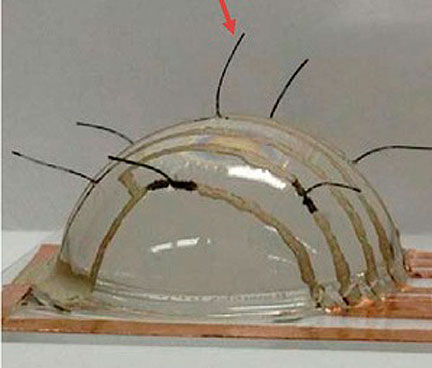Whiskers Give Robots New Sensitivity to Surroundings
 Jan-25-14
By giving robots ‘whiskers,’ researchers hope to also provide the robots with a new way to see and feel their surroundings.
Jan-25-14
By giving robots ‘whiskers,’ researchers hope to also provide the robots with a new way to see and feel their surroundings.Many mammals and insects rely on their whiskers, which are basically tactile sensors, to navigate through tight spaces or monitor wind. The electronic whiskers created by the team from Berkeley Lab and UC Berkeley, which are similar to the whiskers of cats and rats, are made up of composite films of carbon nanotubes and silver particles. The whiskers can detect pressure as slight as a single Pascal—about the same pressure as that of a dollar bill sitting on a table.
As a proof-of-concept, the team used the e-whiskers to create an accurate 2D and 3D map of wind flow. Possible applications for the e-whiskers include “tactile sensing for the spatial mapping of nearby objects” as well use in wearable sensors to measure heartbeat and pulse rate.
Image: An array of seven vertically placed e-whiskers used for 3D mapping of the wind.

More Info about this Invention:
[GIZMAG.COM][BERKELEY LAB]

Add Your Comment